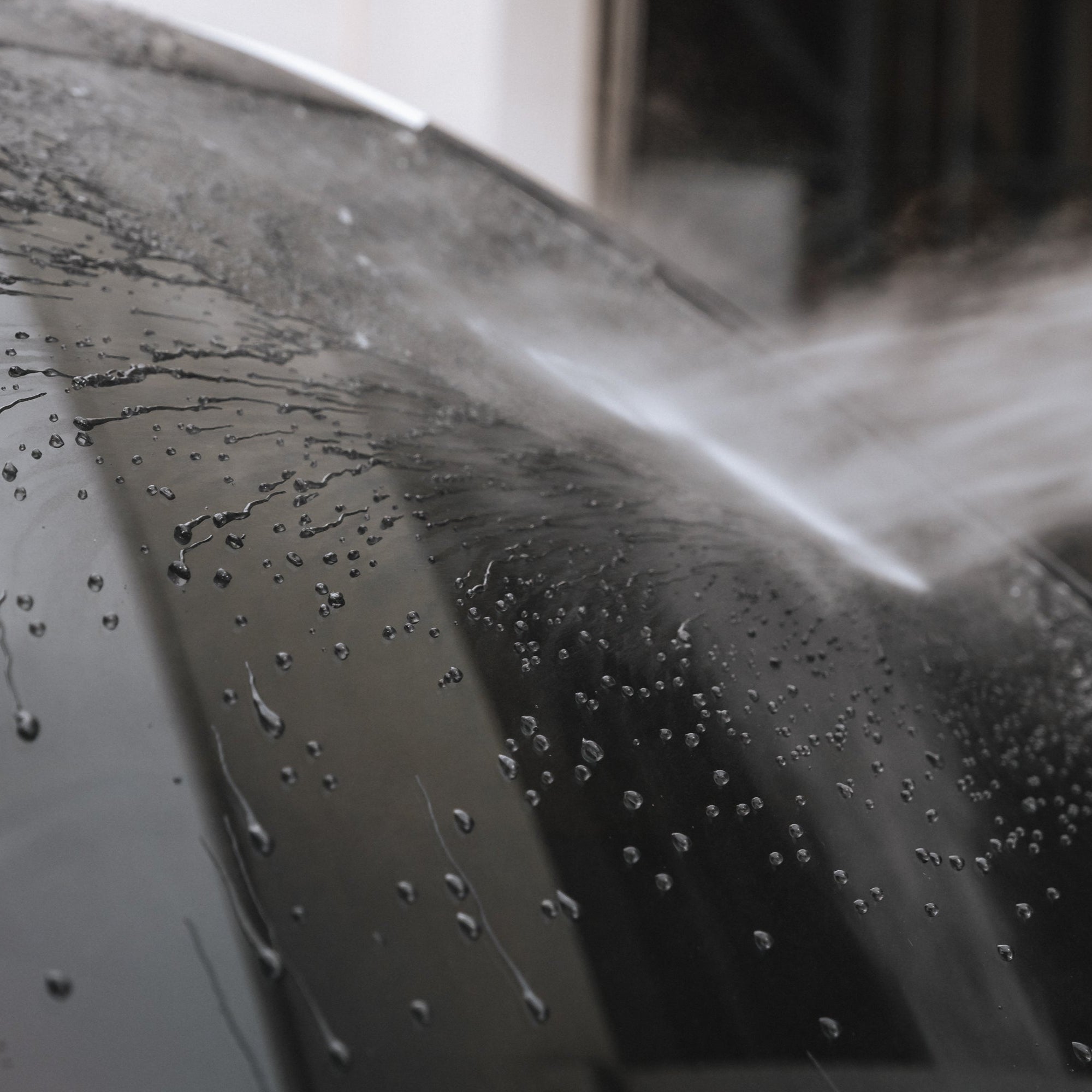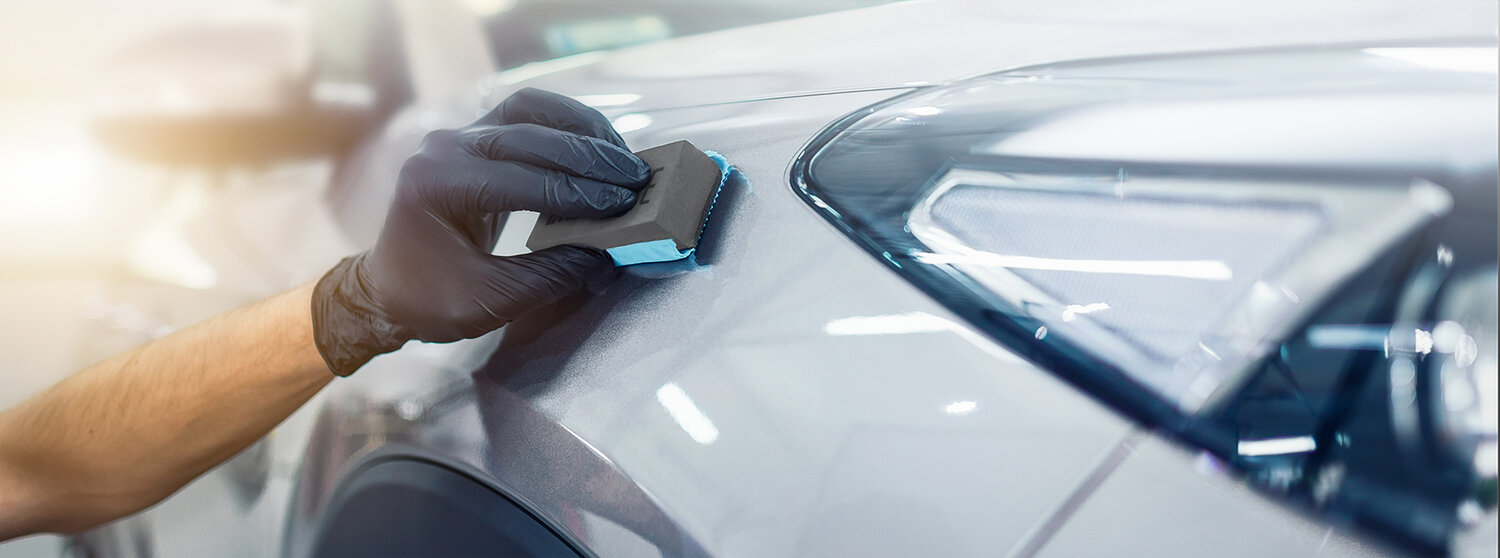Change Your Trip with Ceramic Coating: A Detailed Process
Change Your Trip with Ceramic Coating: A Detailed Process
Blog Article
Comprehending the Scientific Research Behind Ceramic Coating for Enhanced Lorry Durability
The science of ceramic finishing is changing car maintenance by offering an awesome shield versus extreme environmental aspects. As we discover the detailed composition and application process of ceramic coatings, we discover the keys behind their exceptional protection and durability (ceramic coating). How does this compare to traditional techniques, and what effects does it have for lorry maintenance in the lengthy term?

Make-up of Ceramic Coatings
Ceramic finishings are mainly made up of silicon dioxide (SiO2), which is originated from all-natural materials like quartz and sand. This compound forms the foundation of the finish, offering its particular firmness and resistance to ecological components. Along with SiO2, ceramic finishes usually include titanium dioxide (TiO2) for improved UV security and raised resistance to toxic wastes. These nanocomposite products create a robust, chemical bond with the car's surface, offering a long-lasting safety layer.
The formula of ceramic coatings is a precise procedure where the focus of SiO2 can significantly affect the finish's efficiency. Greater SiO2 material normally causes greater durability and hardness, contributing to the finish's capacity to resist scratches and chemical etching. The equilibrium of parts is critical; also much SiO2 can make the coating weak, while as well little can endanger its protective buildings.
Producers may additionally incorporate additional materials, such as polysilazane, to boost flexibility and convenience of application. These additives enhance the covering's hydrophobic properties, guaranteeing water and impurities grain off the surface easily. This crafted make-up highlights the efficiency of ceramic layers in securing a vehicle's outside against a variety of adverse conditions.
Application Refine Discussed
Applying a ceramic layer to a car includes several essential steps, each essential to making certain optimal bond and performance of the protective layer - ceramic coating. The process starts with a complete wash and purification of the car's surface area to eliminate dirt, gunk, and previous waxes or sealants. This action is vital as any type of pollutants left externally can prevent the coating's ability to bond successfully
Following the first cleansing, the next step includes polishing the car to eliminate any type of imperfections, such as swirl marks or scratches. Sprucing up ensures a smooth surface, which is vital for the coating to adhere effectively and provide a consistent finish. After brightening, a surface preparation spray is used to remove any remaining residues and make sure that the surface is totally tidy.

Protective Advantages
Frequently hailed for its exceptional protective high qualities, a ceramic covering uses various advantages that considerably enhance car longevity. At its core, ceramic covering develops a hard, semi-permanent obstacle over an automobile's outside, which acts as a shield versus different environmental threats.
Additionally, ceramic coatings exhibit hydrophobic buildings, indicating they repel water and promote a self-cleaning result. This feature decreases the adherence of dust and mud, simplifying upkeep and cleaning processes. The finish's resistance to chemical etching even more ensures that the lorry's surface remains unblemished despite exposure to rough cleaner and toxins.
In enhancement to these safety benefits, the ceramic covering improves a lorry's aesthetic appeal by developing a shiny finish that highlights color depth and clarity. This not just sustains the lorry's aesthetic allure however also adds to its long-lasting worth by maintaining the honesty of its outside in time.
Contrasting to Standard Approaches
Unlike standard techniques of lorry protection, such as shaving or sealants, ceramic finishes supply an even more long lasting and resilient solution. Where waxes and sealers typically supply a short-term layer of protection, commonly requiring reapplication every few months, ceramic coatings develop a semi-permanent bond with the lorry's paint. This bond develops a safety layer that is immune to environmental contaminants, UV damages, and small abrasions.
Traditional waxes are mainly made up of natural parts like carnauba wax, providing a shiny surface however doing not have the robust protective qualities of ceramic finishes. Sealers, while synthetic and offering slightly much better resilience than waxes, still drop brief in contrast to the strength and chemical resistance of ceramic coverings. The innovative innovation of ceramic coatings integrates nanotechnology, which permits them to fill out microscopic imperfections in the paint surface area, leading to a smoother and more hydrophobic surface.
In terms of application, ceramic finishes call for a more meticulous procedure, website here often requiring expert setup to guarantee optimal efficiency. This contrasts with the reasonably simple application of sealers and waxes, home which can be applied in the house. The remarkable security and aesthetic improvement offered by ceramic finishes justify the investment for those looking for long-term car conservation.
Longevity and Maintenance
Exactly how does the longevity of ceramic coatings convert right into ease of maintenance for lorry proprietors? The innovative formulation of ceramic coverings supplies a robust safety layer on the vehicle's surface, which substantially extends the lifespan of the auto's outside finish.
In addition, the hydrophobic nature of ceramic finishes makes it possible for water and other liquids to bead up and roll off the surface, lugging dust and debris with them. This residential property minimizes the accumulation of pollutants, making regular cleaning more effective and much less labor-intensive. Proprietors gain from a continually streamlined, glossy look with minimal effort. Nonetheless, while the finishing itself is resilient, it is not entirely maintenance-free. Regular assessments for damages and periodic reapplication are suggested to make certain the protective layer remains undamaged. Therefore, ceramic finishings provide a useful equilibrium in between long-term durability and streamlined upkeep for vehicle care.
Final Thought
Ceramic coverings, with their advanced chemical make-up of silicon dioxide and titanium dioxide, provide a powerful obstacle against ecological damages, considerably improving automobile durability. The hydrophobic residential or commercial properties promote self-cleaning, reducing maintenance efforts and preserving aesthetic allure. When compared to conventional methods, ceramic finishes provide premium security against UV rays, oxidation, and chemical etching. This modern technology expands the life expectancy of automobile exteriors, making it an ingenious option for long-lasting conservation and minimal upkeep.
The formulation of ceramic finishes is a careful procedure where the concentration of SiO2 can significantly influence the finish's performance.Using a ceramic layer to a lorry includes a number of critical actions, each crucial to making certain optimum adhesion and performance of the protective layer.Frequently hailed for its exceptional protective qualities, a ceramic layer provides various advantages that substantially improve car resilience. The advanced solution of ceramic layers offers a durable protective layer on reference the automobile's surface, which dramatically expands the life expectancy of the auto's exterior finish.Ceramic coverings, with their innovative chemical structure of silicon dioxide and titanium dioxide, give an awesome barrier versus environmental damage, dramatically enhancing vehicle resilience.
Report this page